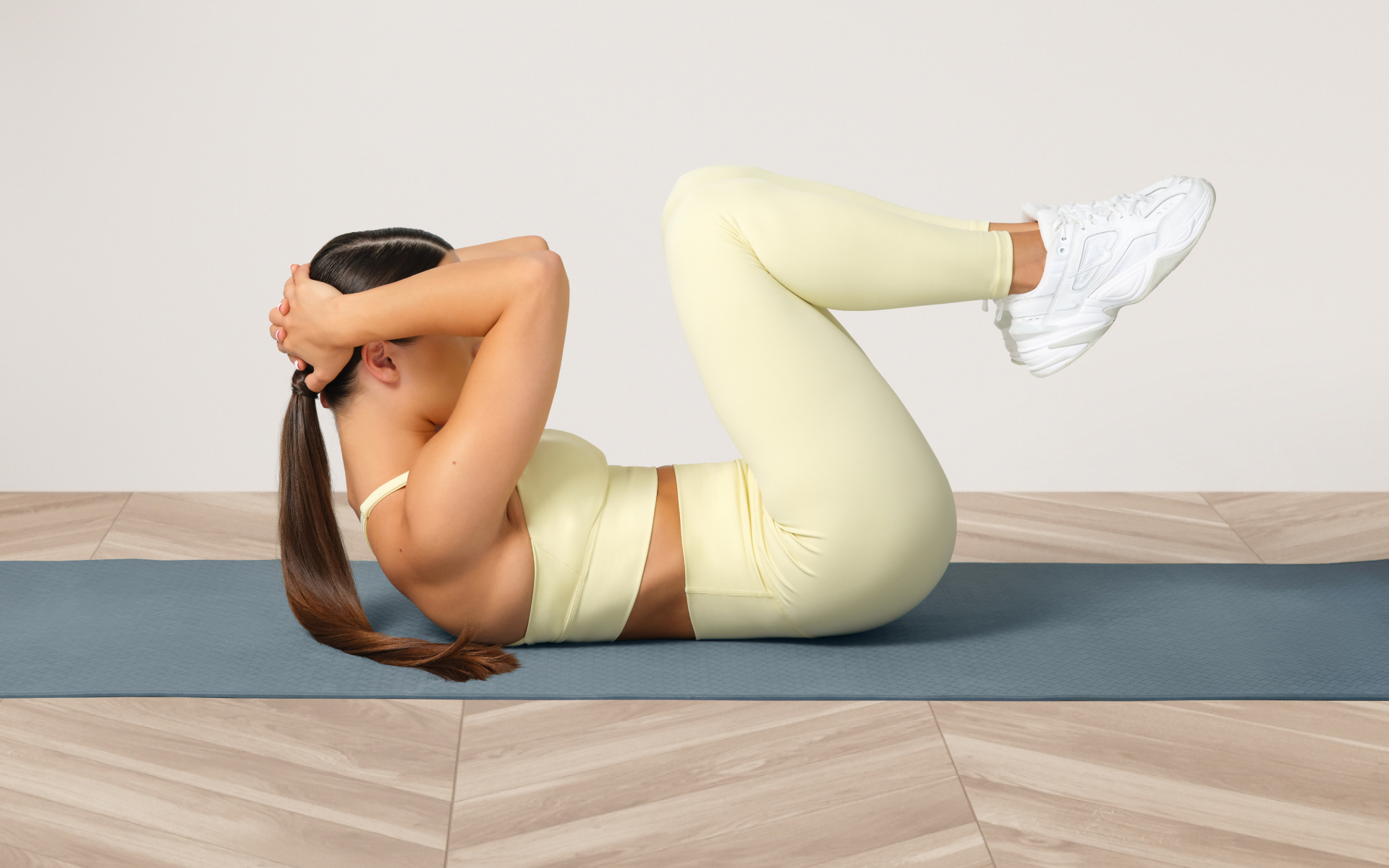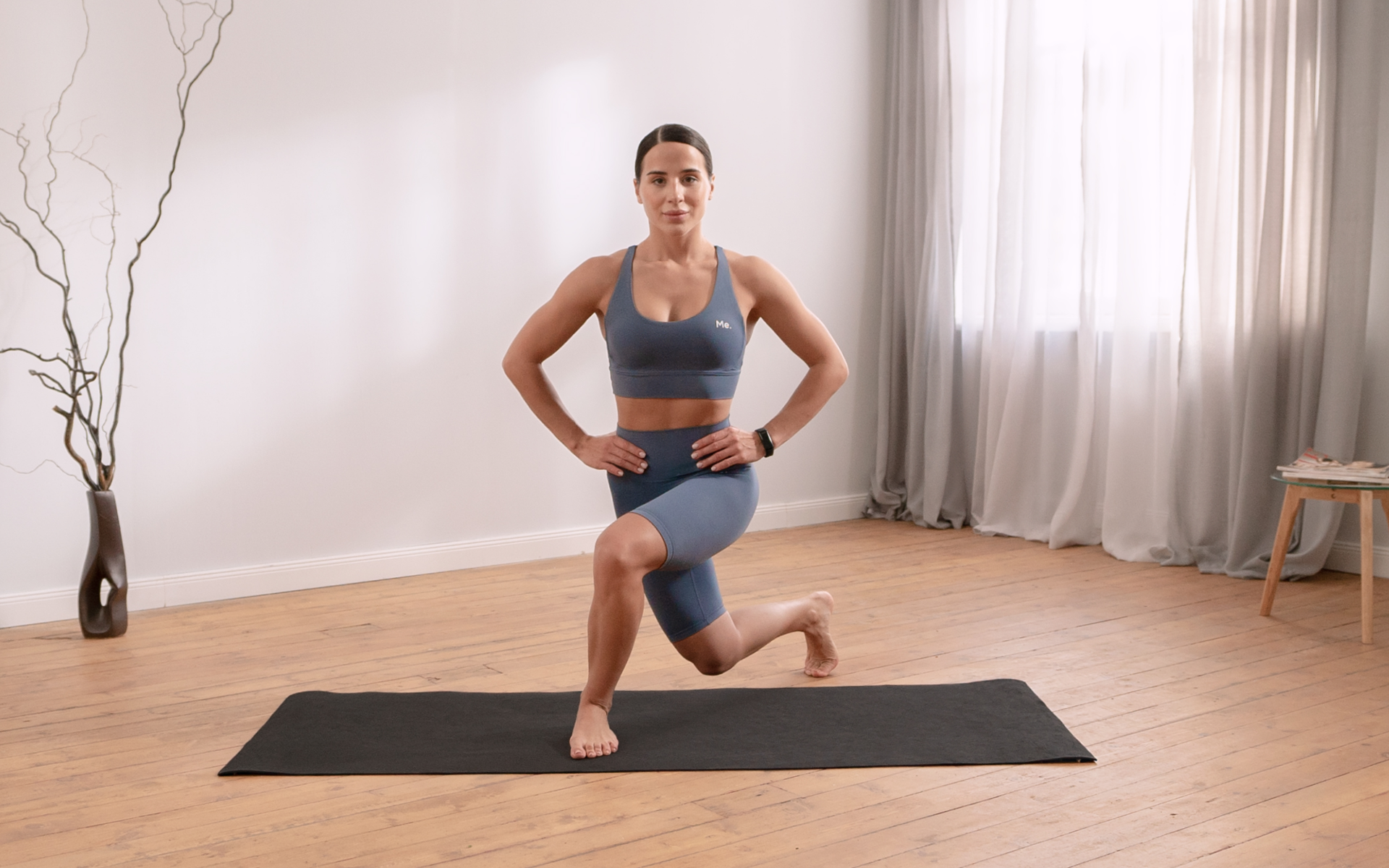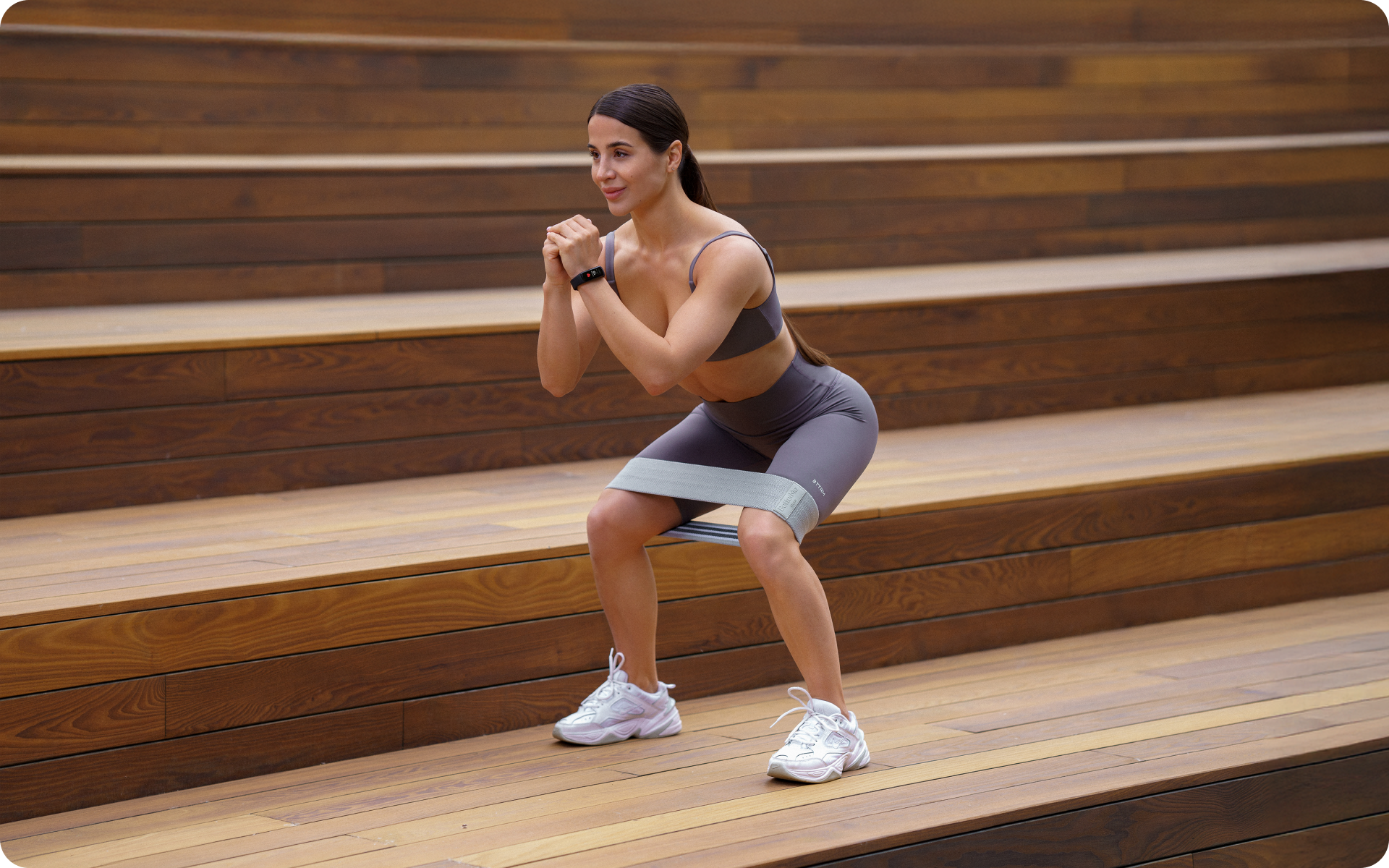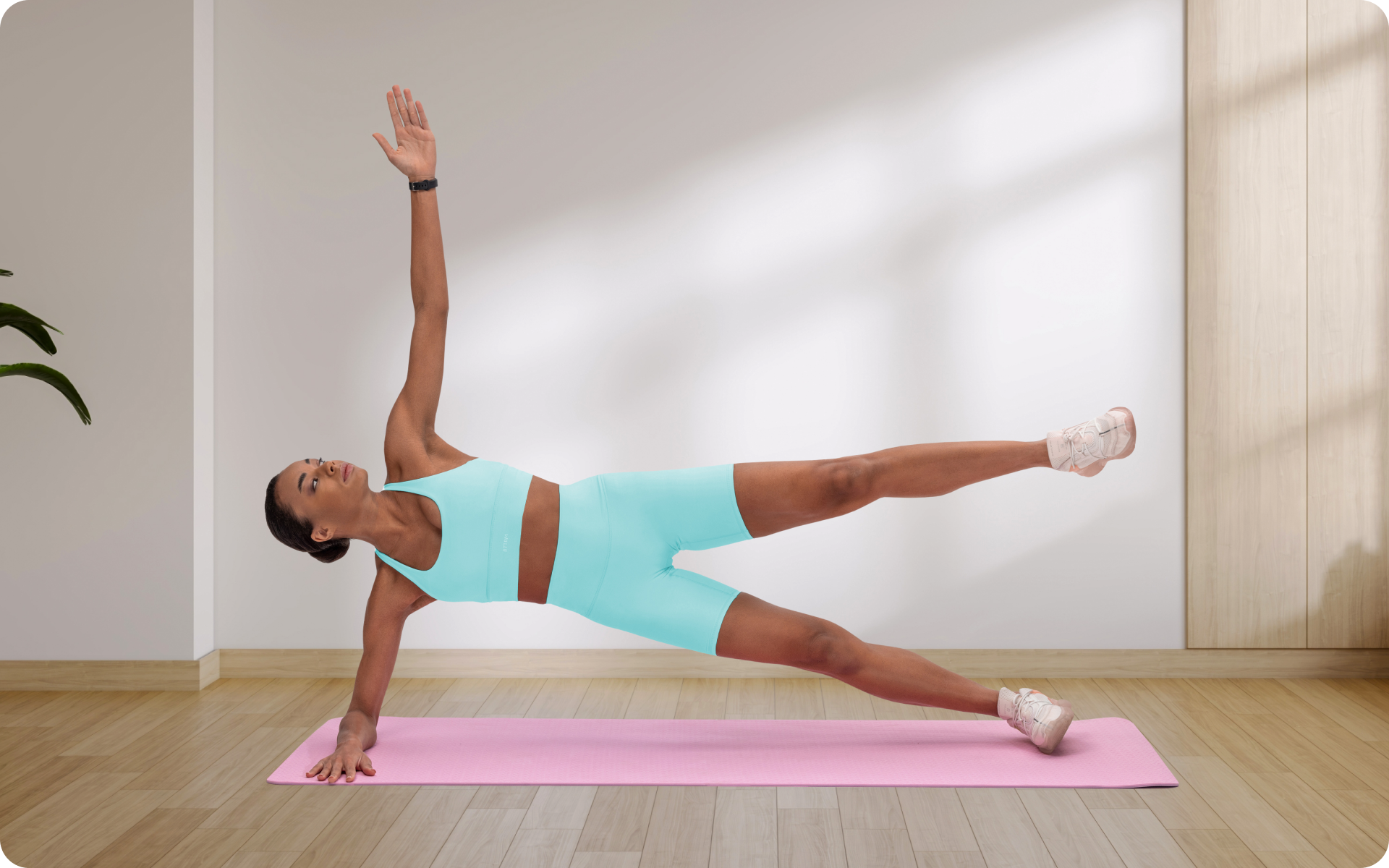If you have ever wished that you had a stronger grip or more defined forearms, you have come to the right place. Forearm strength, often overlooked at the gym, is crucial for everyday tasks, athletic performance, and even improving overall upper body strength. The best part? You don’t always have to hit the gym to get strong forearms, there are a myriad of forearm bodyweight exercises that can be done at home.
This article explores 10 easy bodyweight exercises you can do anywhere and anytime to build impressive forearms. We’ll answer questions like: can you train forearms with just your body weight, and how effective is calisthenics for building forearms? With that in mind, ditch the dumbbells and get ready to crush these bodyweight exercises for stronger, more sculpted forearms.
Let’s get to the details!
Can You Train Forearms with Bodyweight?
Forearm bodyweight exercises with no equipment are a quick and easy fix to help you meet your daily workout goal. Forearms are able to respond to training, and the best part of all, you won’t need any equipment to train your forearms. These 10 easy bodyweight movements can be included in your daily workout as a warm-up, or as a standalone circuit (15). These Forearm bodyweight exercises are for beginners and pros, alike:
- Forearm Plank: This isometric exercise strengthens your entire forearm, including the flexor and extensor muscle groups. Start in a high plank position with your forearms on the ground. Keep your elbows stacked directly under your shoulders and your body in a straight line from head to heels. Engage your core for the entirety of the exercise. As you breathe out, flex your abdominal muscles. Hold for 30-60 seconds (9).
- Dead Hang: This is a simple exercise to improve your grip strength and overall forearm endurance. All you need is a sturdy bar and grip it with your palms facing away from you in the same way that you would start a pull up. Hang from the bar with your arms straight and hold for as long as you can (3).
- Towel Pull-Ups: This one is exactly what the name suggests, if you don’t have a pull-up bar, you can use a towel draped over a door. Grip the ends of the towel with an overhand grip (palms facing away from you) and perform pull-ups. The thicker grip width challenges your forearms more than a standard pull-up bar (9).
To learn more about exercises with towels, we have discussed in our previous article, Are towel rows effective? Remember to be cautious with these exercises, as they could potentially damage your door due to your entire body being held.
- Inverted Rows: All you need is a sturdy bar or table that you can safely grip underhand (palms facing you). Hang from the bar with your arms straight and your body in a straight line. Pull yourself up by bending your elbows and trying to bring your chest as close to the bar as possible, and then lower yourself back down with control, avoiding any jerking motions (17).
- Farmer’s Carry: This is as interesting as the name sounds. All you need is two heavy objects, like books or water jugs, and hold them at your sides with your arms straight. Keep your core engaged and then just walk around slowly, focusing on maintaining good posture and grip (10). These can be done for a distance or a set duration of time. The longer you are able to go, the harder it will be for you to grip on to the external load. This is where the forearm burn will come in!
- Eccentric Chin-Ups: Get a bar that is high enough and use a chair to stand on, so that your chin is above the bar. This is the top portion of this exercise. Then you will slowly lower yourself down with control, focusing on engaging your forearms throughout the movement (9). This is the “eccentric” portion of the movement and is a great way to engage your forearm muscles for a longer period of time.
- Diamond Push-Ups: All you need to do is get into the standard push-up position but place your fingers close together, forming a diamond shape with your thumb and index finger. This push-up variation places more stress on your forearms to help stabilize your body (11).
- Wrist Curls: You can do this anytime you sit down. Sit with your forearms resting on your thighs, palms facing down. Slowly curl your wrists up, lifting your fingers as high as possible, then lower them back down with control. You can also perform this exercise with your palms facing up to target the flexor forearm muscles (18), rather than the extensor forearm muscles.
- L-Sit Hold: This isometric exercise strengthens your core and forearms. Sit on the floor with your knees bent and feet flat on the ground. With your palms flat on the floor, lift your hips off the ground and extend your knees so that your body forms an “L” shape. Hold for 30-60 seconds or as long as you can maintain good form.
- Rock Climbing: Rock climbing is a great way to build overall upper body strength, including your forearms. The act of gripping helps improve grip strength and forearm endurance (7).
Once you’re comfortable with these bodyweight exercises, you can consider incorporating weighted exercises to challenge yourself for continued improvement. In a previous article, Can I build a body without equipment, we have discussed other benefits of bodyweight exercises.
BetterMe app will kick you out of the mental funk, shake off your extra weight, rid you off your energy-zapping habits, and help you sculpt the body of your dreams. Intrigued? Hurry up and change your life for the better!
How To Train Forearms Without Equipment
Looking to build your forearms but not a fan of the dumbbells? Look no further. While dedicated exercise routines are important for building forearm strength, you can also engage your forearms in day-to-day activities.
Here are a few everyday movements that you can turn into mini-workouts for your forearms:
Grocery Shopping:
- Ditch the Bags: Instead of the trusty grocery bag, opt for a reusable shopping basket. Carrying groceries forces your forearms to work isometrically to maintain your grip and stabilize the basket’s weight.
- The One-Armed Carry Challenge: We’ve all done this subconsciously when carrying heavy bags. This time do it intentionally. Carry all your groceries in one arm for short distances and then switch to the other. This unilateral challenge strengthens your grip and individual forearm muscles.
At Home:
- Ditch the Jar Opener: Have a tightly wound jar? Ditch the opener and use your forearms! Grip the lid firmly with both hands and twist with controlled force. This isometric challenge strengthens both your grip and forearm rotation.
- The Towel Wring: After washing dishes or mopping the floor, wring out the excess water with your hands instead of using a wringer. This motion activates your forearm muscles .
Gardening:
- Raking with Passion: The next time you pick up the rake, turn it into a forearm workout. Squeeze the rake handle firmly with both hands, engaging your forearms throughout the pushing and pulling motions. Focus on maintaining good posture and using your core to avoid back strain.
- Digging with Two Hands: When digging up your garden, switch out the large shovel for a hand shovel. The smaller shovel requires a stronger grip and activates the forearms to move the dirt. Remember to switch hands periodically to avoid discomfort and over-exertion.
These easy-to-incorporate forearm bodyweight exercises can be done at home and are suitable for beginners. However, it is important to remember to not over-exert yourself as this can increase the risk of injuries.
A few tips to bear in mind the next time you are on to using these mini-workouts:
- Increase Intensity Gradually: The mantra to follow here is ‘Don’t overdo it’ initially. Start with lighter weights or shorter holding times in daily activities and gradually increase the intensity to challenge yourself as your forearms get stronger.
- Focus on Form: Good posture is the key to preventing injuries. Maintain correct posture and jerk-free movements during these daily tasks. Avoid sudden motions that could lead to injury. Engage your core when you are performing any of these exercises or daily tasks.
- Listen to Your Body: If you experience any pain or discomfort, stop the activity and consult a professional before continuing.
The best way to start seeing results is to remember that consistency is key! If you want to learn more about working out those forearms, refer to a previous article on, ‘What are Superman exercises?’
Read more: Calisthenics Warm Up 101: Bodyweight Exercises To Get Your Blood Flowing Before Your Workout
Does Calisthenics Improve Forearms?
While aesthetics might be your motivation for forearm building; it has several benefits for overall athletic performance and improving grip strength for everyday tasks, as well. And the best part is, that you can do a Calisthenics forearm workout with no equipment, you don’t need the whole suite of dumbbells and kettlebells to achieve this.
If you haven’t already heard of Calisthenics, it is a bodyweight training method that utilizes your own weight for resistance and offers a great way to develop forearm strength.
Calisthenics, derived from the Greek words “kallos” (meaning beauty) and “sthenos” (meaning strength), is a discipline focused on mastering the use of your body weight to perform movements that challenge your muscles. Think of playground exercises like pull-ups, dips, and push-ups, but with a wider variety and progressions to target different muscle groups. To learn more about this, read our in-depth article on, 10 Calisthenics Exercises.
Let’s dig deeper into how calisthenics training specifically targets and strengthens your forearms.
- Isometric Holds: This is a common theme amongst several calisthenics exercises. This is where you maintain a static position, challenging a specific muscle group, for a set time. Exercises like dead hangs, plank variations, and L-sits require your forearms to work isometrically to maintain your grip and stabilize your body weight. This isometric stress strengthens your forearm muscles over time (14).
- Grip Variations: Calisthenics exercises often involve plenty of grip variations, such as overhand, underhand, and neutral grips. This variety challenges your muscles in different ways, promoting well-rounded development of your grip strength and forearms (13).
- Functional Strength: The key goal for calisthenic exercises is to build functional strength, so they often mimic real-world movements that require a strong grip. Exercises like pull-ups, rows, and farmer’s carries (using body weight or objects) translate to better grip strength in daily activities like carrying groceries, picking up a child or even climbing stairs (6).
- Bodyweight Progressions: As you get comfortable with your calisthenics training, you can progressively increase the difficulty level of the exercises. For example, going from regular pull-ups to archer pull-ups or one-armed pull-ups requires more grip strength and forearm activation (8).
- Core Engagement: A strong core is key to every exercise, especially calisthenics because it requires core stability. Your core stability benefits your forearms. This is because when your core is engaged, it creates a more stable base for your entire body, allowing your forearms to work more effectively during exercises (16).
If this is something that interests you, read our previous articles on, How To Get into Calisthenics and Calisthenic for Beginners: Women.
How To Increase Forearms At Home?
Forearm bodyweight exercises at home are achievable and effective. Here are 8 ways to target your forearms without needing any equipment:
- Bodyweight Exercises: Forearm bodyweight exercises with no equipment are the way to go, as discussed above. A combination of various bodyweight exercises that focus on grip strength and forearm activation should deliver results. Some common exercises include dead hangs, negative chin-ups, wrist curls (with palms facing up and down), and farmer’s carries (using heavy objects like books or water jugs) are all great options.
- Isometric Holds: The power of isometric holds works like a charm to strengthen forearm muscles. Exercises like plank variations (forearm plank, side plank), L-sits, and dead hangs challenge your forearms isometrically to maintain your body weight in a fixed position.
- Grip Variations: This is a recommendation for any form of exercise you are undertaking for forearms. Try different variations, experimenting with overhand, underhand, and neutral grips during pull-ups, rows, or towel pull-ups. This variation challenges your forearms in different ways, promoting the well-rounded development of your grip strength and musculature.
- Maximal Hangs: One of the best forearm bodyweight exercises is dead hangs. But if they are becoming too easy for you, try maximizing your hang time. Aim to progressively increase the duration you can hold yourself from a bar, be careful to maintain good form. This challenges your grip endurance and overall strength (5).
- Towel Work: This one is exactly what the name suggests, if you don’t have a pull-up bar, you can use a towel draped over a door. Grip the ends of the towel with an overhand grip (palms facing away from you) and perform pull-ups. The thicker grip width challenges your forearms more than a standard pull-up bar (9). You can also use a towel for wrist curls by wrapping it around a doorknob or similar object.
- Single-Limb Exercises: While many bodyweight exercises are bilateral (working both arms simultaneously), try incorporating single-limb variations. Exercises like single-arm rows or negative chin-ups with one arm at a time place a greater demand on the working forearm, promoting individual forearm strength development (9).
As you get stronger, challenge yourself by increasing the difficulty of the exercises. This could involve increasing the number of repetitions, sets, and hold times, or incorporating weight vests or backpacks filled with books during exercises like pull-ups or dips.
If you want to learn more about exercises with weights, read our article on How to do a dumbbell row.
Lean and toned up body isn’t just a far-fetched fantasy. Check out the BetterMe app and watch it propel your weight loss journey into high gear!
Are Forearms Easy To Build?
Training consistently is the key to building forearm strength and size. They generally respond well to training. Here’s a breakdown to consider:
- Muscle Growth Potential: Forearms are composed of two main muscle groups: the flexors (grip closing) and extensors (grip opening). These muscles, especially the flexors, have a relatively high concentration of fast-twitch muscle fibers. Fast-twitch muscle fibers have a greater potential for hypertrophy (growth) compared to slow-twitch fibers with proper training stimulus (4).
- Training Frequency and Intensity: Like any muscle group, forearms respond best to consistent training with a gradual increase in difficulty. Regularly incorporating forearm-focused exercises or activities with proper form and intensity will lead to strength and size gains over time.
- Genetics: Don’t compare your progress to those of others. Individual genetics play a role in muscle growth potential. Some people may naturally have a higher predisposition for forearm development than others (1).
- Overall Training: Forearms are often indirectly engaged during many pulling and gripping exercises for the upper body. If you’re already following a well-rounded strength training program that includes exercises like rows, pull-ups, and deadlifts, you’ll likely see some degree of forearm development.
Do Push Ups Work Forearms?
It’s a commonly asked question in the fitness community. Push-ups can definitely have an impact on your forearms, but the extent depends on a few factors:
- Grip Activation: Push-ups require a strong isometric grip to maintain hand position throughout the movement. This isometric activation strengthens the muscles in your forearms responsible for grip strength, particularly the flexors.
- Push-Up Variation: There are several variants of push-ups that focus on different parts of your body. For example, standard push-ups primarily target your chest, shoulders, and triceps. However, variations like one-arm push-ups or diamond push-ups place a greater emphasis on your forearms. Essentially any form of push-up with a narrow base of support works the forearms (2).
The best results are always achieved with overall training. Although, if push-ups are your go-to exercise it might be better to experiment with a few variations to see growth with your forearms. Incorporate them into a well-rounded routine that includes dedicated forearm exercises or other pulling motions (rows, pull-ups) and you’ll see a more complete development of your forearms.
Read more: 30-Minute Bodyweight Beach Workout for Beginners
Yes, you can build muscle and improve fitness without using equipment and only relying on bodyweight exercises. Push-ups, pull-ups, squats, lunges, and planks effectively target various muscle groups. These exercises can be modified to increase difficulty as you progress with your fitness journey. Additionally, incorporating high-intensity interval training (HIIT) can also boost cardiovascular fitness and overall strength. Consistency, proper form, mindful eating habits and progressive overload are key to seeing results Towel rows are an effective bodyweight exercise for strengthening the back, particularly the upper back and lats. By using a towel looped around a sturdy object, you can recreate the rowing motion similar to using gym equipment. This exercise also engages the biceps and forearms, promoting overall upper-body pull strength. Make sure you maintain proper form to reduce any risk of injury. Make sure that the door and the towel you are using are strong enough to hold your body weight. To perform a dumbbell row, stand with feet shoulder-width apart, holding a dumbbell in one hand. Bend your knees slightly and hinge at the hips, keeping your back straight and parallel to the floor. Let the dumbbell hang at arm’s length. Pull the dumbbell back and towards your side pocket, keeping your elbow close to your body and squeezing your shoulder blade at the top. Lower the dumbbell back to the starting position. Repeat for the desired number of reps before switching sides. This exercise targets the upper back, lats, and biceps, promoting upper body strength and stability. Superman exercises are a bodyweight movement designed to strengthen the lower back, glutes, and core. To perform, lie face down on the floor with arms extended forward and legs straight. Simultaneously lift your arms, chest, and legs off the ground, engaging your lower back and glutes. Hold this position for a few seconds before lowering back down. This exercise mimics Superman’s flying pose, hence the name. It can help to improve posture, core stability, and overall back strength, making it a beneficial addition to any fitness routine, especially for those who spend long periods sitting. (12)FAQs
Can I build a body without equipment?
Are towel rows effective?
How to do a dumbbell row?
What are Superman exercises?
The Bottom Line
Strong forearms aren’t just about looking good; they can grip you tighter to your goals, improve athletic performance, and make everyday tasks easier. The beauty lies in achieving this without needing a fancy gym setup. Calisthenics exercises that use your bodyweight as resistance, offer a fantastic way to build impressive forearm strength.
This article explored various ways to sculpt your forearms with calisthenics:
- We discussed how dead hangs, negative chin-ups, and isometric holds effectively target your forearms through sustained tension and different gripping techniques.
- We learned that gradually increasing the difficulty of exercises (think progressing from regular pull-ups to archer pull-ups) constantly challenges your forearms, leading to further gains.
- We even explored how daily movements like carrying groceries or gardening can be transformed into mini-workouts for your forearms by focusing on proper grip and form.
Remember, consistency is key! Regularly incorporating these calisthenics exercises and daily movement strategies will lead to noticeable improvements in your forearm strength and grip over time. So, ditch the excuses, embrace your body weight, and unlock the potential for stronger, more functional forearms.
And if you’re looking to push your forearm training even further, consider adding weighted exercises or equipment like wrist weights or grip strengtheners as you progress. With dedication and the right approach, you can achieve those powerful, well-developed forearms you’ve been aiming for.
DISCLAIMER:
This article is intended for general informational purposes only and does not serve to address individual circumstances. It is not a substitute for professional advice or help and should not be relied on for making any kind of decision-making. Any action taken as a direct or indirect result of the information in this article is entirely at your own risk and is your sole responsibility.
BetterMe, its content staff, and its medical advisors accept no responsibility for inaccuracies, errors, misstatements, inconsistencies, or omissions and specifically disclaim any liability, loss or risk, personal, professional or otherwise, which may be incurred as a consequence, directly or indirectly, of the use and/or application of any content.
You should always seek the advice of your physician or other qualified health provider with any questions you may have regarding a medical condition or your specific situation. Never disregard professional medical advice or delay seeking it because of BetterMe content. If you suspect or think you may have a medical emergency, call your doctor.
SOURCES:
- 5 Factors That Influence How Quickly You Build Muscle (2022, cnet.com)
- 16 Push-Up Variations to Build Strength (2023, shape.com)
- Are Dead Hangs the 30-Second Secret To Decompressing Your Back? (2024, well and good.com)
- Anatomy, Shoulder and Upper Limb, Forearm Muscles (2023, ncbi.nlm.nih.gov)
- Comparison of the Effects of Three Hangboard Strength and Endurance Training Programs on Grip Endurance in Sport Climbers (2019, ncbi.nlm.nih.gov)
- Does a Calisthenics-Based Exercise Program Applied in School Improve Morphofunctional Parameters in Youth? (2015, researchgate.net)
- Effectiveness of calisthenics training for improving grip strength and motor performance in rock climbers (2011, pubmed.ncbi.nlm.nih.gov)
- Effect of Progressive Calisthenic Push-up Training on Muscle Strength and Thickness (2018, pubmed.ncbi.nlm.nih.gov.in)
- Exercise Database & Library for Beginners (n.d. acefitness.org)
- Farmer’s Carry: Techniques, Benefits, Variations (2024, verwellfit.com)
- Fingertip Push-Up (n.d., exercise.com)
- How to Do the Superman Exercise to Strengthen the Back of Your Body ( 2022, shape.com)
- How To Increase Grip Strength In Calisthenics? (2022, calisthenicsworldwide.com)
- Isometric Exercise (n.d., sciencedirect.com)
- The 10 best bodyweight exercises to train your forearms (2022, muscleandfitness.com)
- The effects of a calisthenics training intervention on posture, strength and body composition (2017, researchgate.net)
- The Inverted Row (n.d. journal.lww.com)
- The Top 10 Benefits of wrist curls (n.d., americansportandfitness.com)











